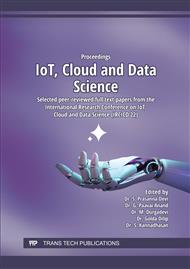p.236
p.246
p.250
p.259
p.268
p.277
p.285
p.295
p.305
Driver Yawn Prediction Using Convolutional Neural Network
Abstract:
Driver weariness is the leading cause of road accidents, according to numerous studies. Computer vision algorithms have shown promise in detecting indicators of exhaustion from facial motions like yawning. Precision and consistent yawning recognition is difficult in the real-world driving environment due to the various facial gestures and expression of driver. Yawning causes a mouth deformation in a variety of facial activities and expressions. This paper provides a novel way to based on minor facial motion identification to address the aforementioned concerns. We offer a for nuanced face activity recognition. Bidirectional and 3D convolutional networks are used in this network. A keyframe selection technique is used to discover the most from delicate face gestures. This method employs photo histograms to swiftly eliminate redundant frames and the median absolute deviation to locate outliers. A variety of tests are also run on the method.
Info:
Periodical:
Pages:
268-276
Citation:
Online since:
February 2023
Authors:
Price:
Сopyright:
© 2023 Trans Tech Publications Ltd. All Rights Reserved
Share:
Citation:


